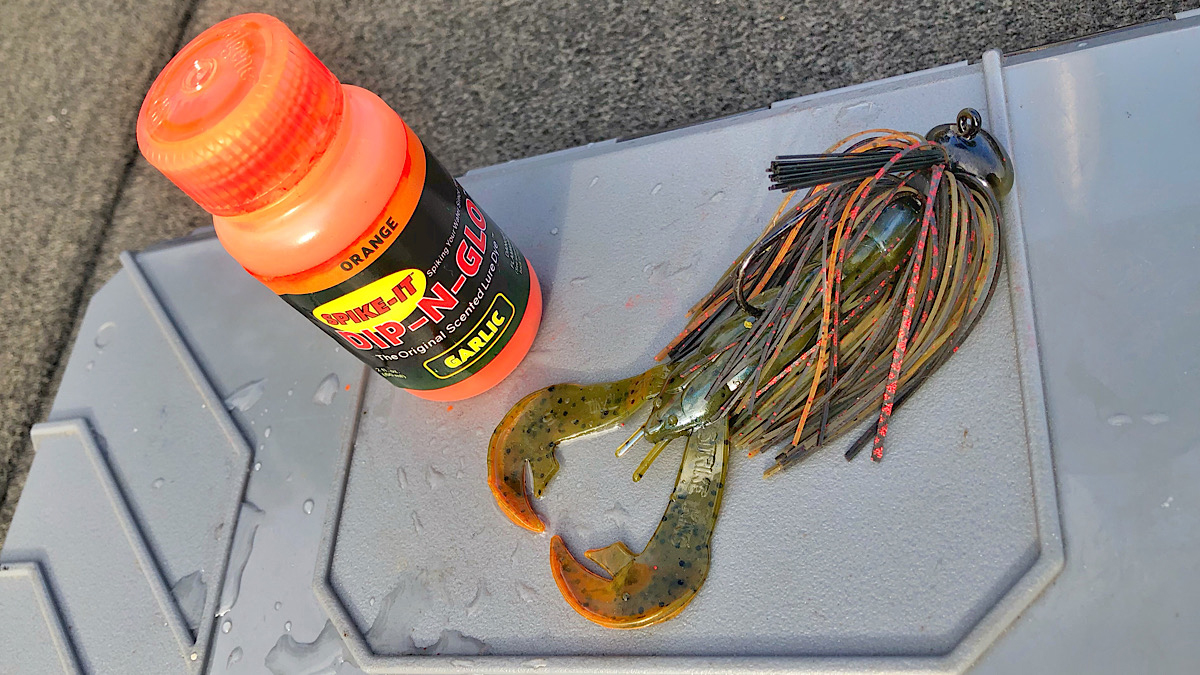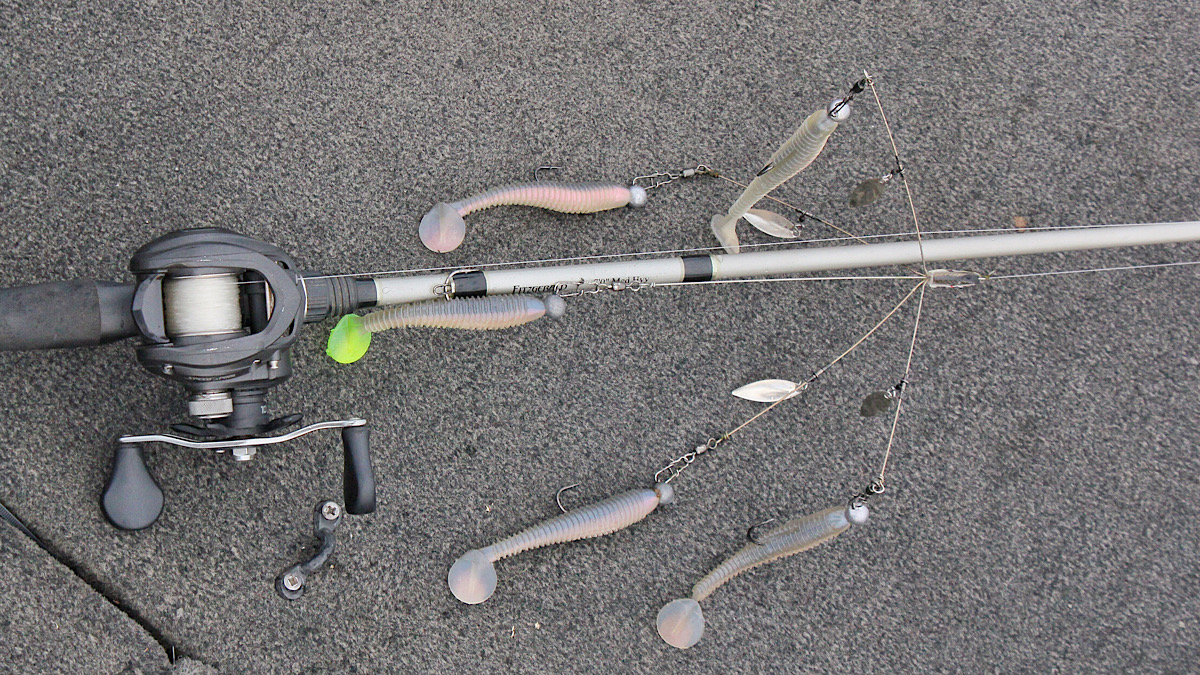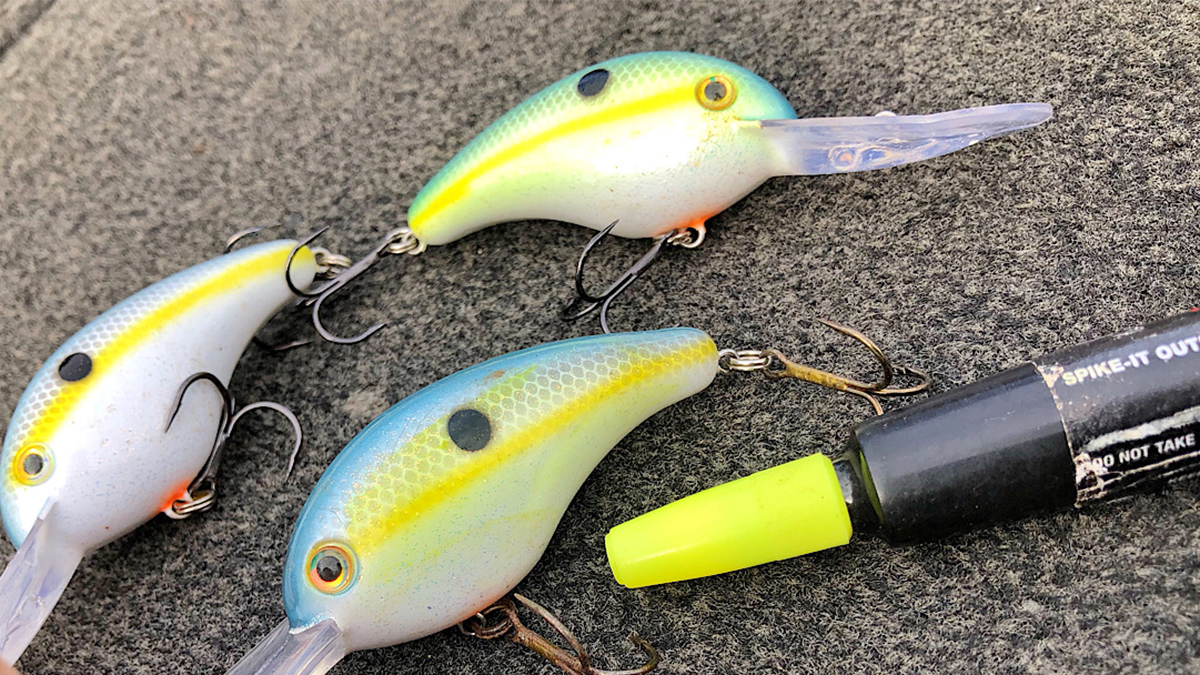A little tackle tweaking can go a long way at times. Adding a trailer to a spinnerbait, trimming a little off a jig skirt and bending the hook up a hair on a frog are all great ways to improve your odds. But some of the easiest and most effective quick modifications can be done using dipping dye and dye markers. Spike-It, JJ’s Magic and several other companies offer products like this that you can use to add a little color and typically a little scent, to almost any bait you can think off.
Today we’re going to talk about four good uses for such products. You’ll find the markers work better for some applications and the jars of dipping dye are better suited for others. And some of these ideas will be a little more generic, while some are pretty specific. But all have proven effective time and time again for anglers looking to add a little something extra to their presentation.

Anything green pumpkin
Adding a little chartreuse to the back of almost any bait that comes in green pumpkin is perhaps the most common use of dipping dye and dye markers. If you look at most bream in the water, they’ll have a little light green to bluish hue to their tails. Dipping the tips of a green pumpkin lizard, stick bait, craw or other soft plastic does a great job of creating a similar color to what you’d see out of many small baitfish like this.
That little chartreuse tail or tip of a claw kicking along in the water looks very similar to a bream swimming or trying to escape. I have personally seen it happen several times where we’d either be getting a few bites or none at all and then myself or the angler with whom I was fishing marked up that last inch or so of the bait and it’s like you turned on a light switch. The fish just went to biting. It likely doesn’t hurt either that the dye typically has a strong scent to it. Not always 100% sure which of the two is responsible for the increase in production, but it definitely works.
Craw trailers
It’s important to note here that these markers and jars of dipping dye come in an array of colors, not just chartreuse. This gives anglers the ability to use red, blue, orange, merthiolate or any of a large variety of colors to mimic specific characteristics of a fishery’s forage. Another great use of these products is dyeing the tips of claws on jig trailers. It works great for lots of different kinds of trailers, but for craws in particular, the dye makes a big difference.
I’m not a biologist; I don’t know if it’s a certain species of crawfish or crayfish that has orange on the tips of their claws. It may be a certain time of the year that more of them have a little orange on them than others. But I’ve noticed football jigs with a few strands of orange in them do really well in the winter here in Alabama. And dyeing the tips of a craw trailer orange and pairing it with one of those jigs makes it that much sweeter.
You can test this theory out for yourself at random to see if it works, but it’s a good idea too for you to keep an eye out for crawfish the bass spit up to see what colors to go with. I’ve heard of anglers having this happen several times over the years. They open the livewell, see a dead crawfish on the bottom of the well that’s been spit up by a bass and then dress their jig up to match the hatch.
Umbrella rig
Like them or not, umbrella rigs are some of the most effective artificial lures out there. But with so many people fishing them now, the fish have finally become a little leery to them. Bass will follow the rigs a lot more now or swat at one of the outside baits and miss hooking up. One of the best ways to up your odds, is to do a little something different with the middle bait.
Using a slightly larger swimbait or a different brand bait for the middle lure works well at times. This helps the bass hone in on the center of the rig, and is often enough to get one to commit that otherwise wouldn’t have. Using a different color bait of the same brand as the other four swimbaits for the center lure works well too. And this is where the dipping dye comes in. Dipping the tail of that center swimbait in a chartreuse or other bright color is a great way to set that middle bait apart and get the fish really focused on the heart of the rig.
Hard baits
You can also use dye markers to fine-tune hard baits. You can take a shad pattern, like Strike King’s Sexy Shad, and a chartreuse marker and turn it into their Chartreuse Sexy Shad color right quick. This is very helpful when you found a bait that the fish are dialed in on and you lose your last lure of that exact model. Or you find yourself around an abundance of shad and you want to match the hatch, but also need to add a little something extra to your presentation to get the fish to single out your lure. Adding a little chartreuse to hard baits like this is beneficial too if you start to move from clear to stained water.
Dipping dye as well as dye markers can be used to modify lots of presentations. Adding a little chartreuse to the back of your favorite green pumpkin bait can make all the difference at times. And dipping the tips of a craw trailer may be just what you need to really dial your jig in. Or perhaps you need a little something to get a fish to commit to your umbrella rig, try adding a little dye to the tail or your middle swimmer.
And then don’t forget you can dress up a hard bait as well by changing the hue of its coat to standout a little more in the crowd or the stain. Hopefully these tips will help you catch more fish the next time you hit the water.















